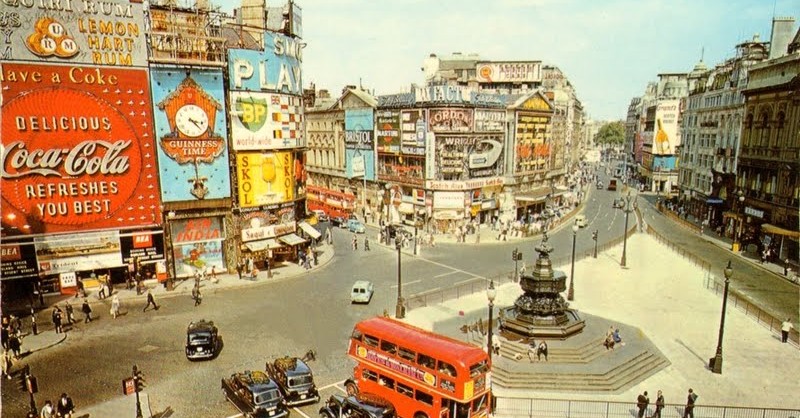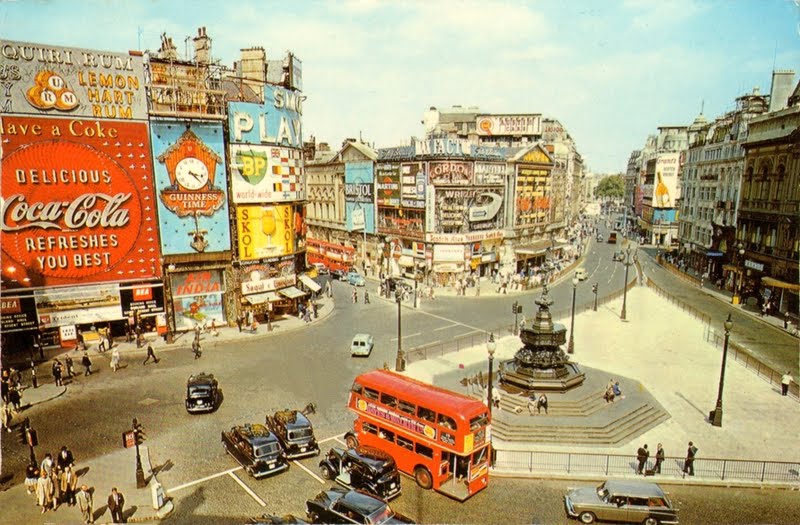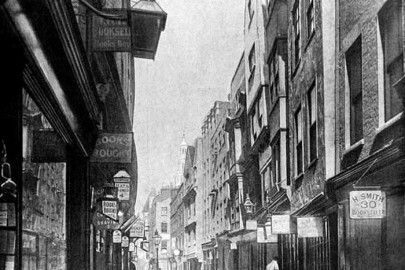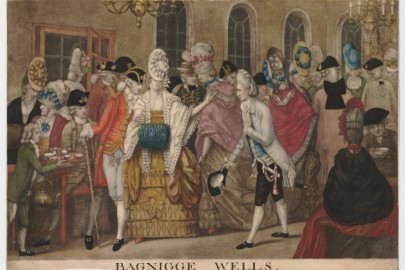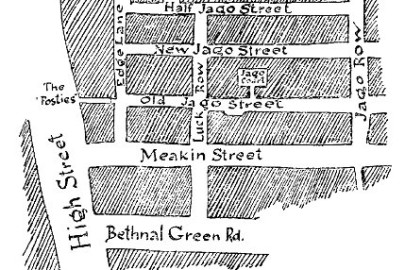Jonathon Green continues his remarkable slang tour of London with a stroll down the Dilly, taking care to avoid a dose of the Piccadilly cramp…
I’m Gilbert the Filbert, the knut with a k,
The pride of Piccadilly, the blasé roué.
Oh Hades! the Ladies who leave their wooden huts,
For Gilbert the Filbert, the colonel of the knutsArthur Wimperis ‘Gilbert the Filbert’ (1914)
My late mother was driving down Piccadilly sometime in 1956. Fascinated by the flocks of young women chatting momentarily to a succession of strangers, she urged my father to stop the car. So he did. My mother, imbued perhaps with that streak of voyeurism so necessary to lexicography, stared. One of the young women detached herself from the mob. She approached the car. Was my mother, she asked, requiring business? If not, and here she opened her bag, revealing the handle of a cut-throat razor, perhaps she would care for a stripe? And failing that, perhaps she would prefer to move on. My father, who knew enough to appreciate that this stripe did not refer to those he had worn during the still recent engagement with Jerry, duly accelerated away.
Piccadilly, running from the eponymous Circus to Hyde Park Corner started off life as Portugal Street (named in 1692 in honour of Charles II’s wife Catherine of Braganza) and took its new name from the piccadill (itself from the Spanish picado, meaning pricked, pierced, punctured, slashed or minced), an ornamented collar fashionable around 1600. Depending on whom one believes the piccadill was brought to the UK either by Robert Baker (London Encyclopedia, 1983) known as ‘a man of a covetous dispocion’, or by Stephen Higgins (Atheneum, 1901), who it turns out was his father in law and was in turn ‘of a verie naughtie disposition’ and sometimes ‘transported with heate of rage and furie’. Both were speculative builders and one of them made a fortune from his import, sufficient to buy land around what is now Piccadilly Circus (itself named in 1819 and the climax of Nash’s Regent Street) and to erect, c.1622, a large mansion which was promptly and irreverently christened Piccadilly Hall. The surrounding area soon became known as Piccadilly. However, the OED cites a source writing in 1656 who claimed that the house was thus named because, being at the furthest edge of the parish of St Martin in the Fields, in which it lay, it was therefore serving as a ‘collar’, or outer edge of the area.
Nicknamed by the mass it was soon embraced by popular culture. John Taylor noted those who had been ‘Late choaked with the Hangmans Pickadill’, i.e. the noose. By the time Hotten was selling fladge books and slang dictionaries on the site of what is now the Ritz it was well known as a whores’ stroll, a reputation that lasted till the Street Offences Act of 1959 took the Edies off the streets. Edies were cut-price girls who worked the Dilly and the Baze – Bayswater Road; the smarter Toms worked Mayfair. The girls had been Piccadilly daisies and Piccadilly commandos and the Piccadilly cramp, venereal disease, had been recorded in 1700, synonymous with the
Covent Garden Gout. For a while they were known as jam. J. Redding Ware wrote thus in 1909:
‘A girl of notoriety in Piccadilly was named “Tart”. She, in compliment to her sweetness, came to be styled jam tart, and the knowing ones would ask ‘Would you like a bit of jam tart?’ Then the tyranny of brevity asserting itself, the phrase became “jam”.’
The paradox of tart was that it began life as a compliment. Hotten explained:
‘Tart, a term of approval applied […] to a young woman for whom some affection is felt. The expression is not generally employed by the young men, unless the female is in “her best,” with a coloured gown, red or blue shawl, and plenty of ribbons in her bonnet — in fact, made pretty all over, like the jam tarts in the swell bakers’ shops.’
There was also fashion: Piccadilly weepers were ‘long carefully combed-out whiskers of the Dundreary fashion’, the Piccadilly fringe was a popular women’s hairstyle in which the hair was cut short into a fringe and curled over the forehead; the Piccadilly crawl was an affected style of walking adopted by society during the 1880s, possibly by clubmen wearing Piccadilly windows, or monocles. They strolled the moocher’s mile (from moocher, a lounger) which started in Leicester Square or the rogue’s walk, ending at Bond Street. They went to the Cri (The Criterion) or the Troc (the Trocadero) or the Sanguinary Doubles, a bucket of blood at number 222. Culture vultures could try the Egyptian Hall, the popular name for the London Museum – it boasted an ‘Egyptian’ façade – established c.1812 at today’s 170 Piccadilly and holding ‘upwards of Fifteen Thousand Natural and Foreign Curiosities, Antiques and Productions of the Fine Arts’. General Tom Thumb visited in 1844. It was demolished in 1905.
It was the same swell gents who made up the Toothpick and Crutch Brigade, the former fashion item being just that, and the latter a crutch-handled walking stick (sometimes termed a monkey stick). In 1880 they inspired Nellie Power’s music hall lyrics: ‘How d’you like the La di Da, the toothpick and the crutch? / How did you get those trousers on, and did they hurt you much?’
Not every female was for hire. Thus the late 19th century virgins’ bus, the last bus to run westward from Piccadilly Circus and ‘so named,’ explained a contemporary lexicographer, ‘satirically in reference of the chief patronesses at that late hour’, i.e. girls who have resisted male advances.
Sometimes the ‘girls’ were boys. Reynolds News noted the Mary Anns of Piccadilly Circus in 1895. John Bull magazine fulminated in 1925, allegedly appalled by ‘a well-known teashop and public house in Coventry Street where painted and scented boys congregate every day without molestation of any kind . . .sitting with their vanity bags and their high-healed [sic] shoes, calling themselves by endearing names and looking out for patrons.’ London, claimed the writer (by-lined ‘The Man with a Duster’), was a ‘Modern Gomorrah’ filled with ‘rouged rogues’. By the 1950s they were Dilly Boys or rent boys, or Circus cowboys who hawked their mutton on the meat rack, jostling the junkies queuing at the all-night Boots. Kenneth Williams loved it, noting in his diary for 20 June, 1957 ‘Popped into the news theatre in Piccadilly! — phew! the gylrig going on!’ Gylrig is mysterious, possibly polari, possibly a play on ‘girl’ and ’rig’ as in ‘prank’. Tipping his hat, Morrissey sang Piccadilly Palare in 1990 but the boys, and Williams too, were long gone.
A version of this post originally appeared on The Dabbler in September 2011.

